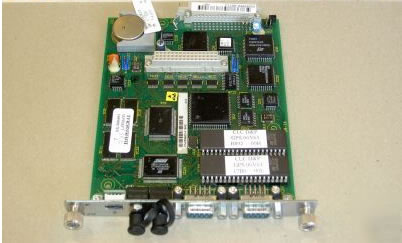As technology advances at an unprecedented pace, it’s easy to overlook one of the most fundamental challenges in the field: aging components. From the microchips in your smartphone to the turbines in power plants, all technological systems are composed of various components that have finite lifespans. The problems associated with aging components are multifaceted and can have far-reaching consequences, impacting everything from consumer electronics to critical infrastructure. Indramat components are bound to face and even create some of these problems, since all Indramat components are, by now, aging.
Reliability and Performance Degradation
One of the most immediate problems with aging components is the gradual degradation of reliability and performance. Over time, electronic components can experience wear and tear, leading to decreased functionality and increased failure rates. For instance, MKD motors use batteries. In these motors as in every battery-powered device, the battery’s capacity diminishes with each charge cycle, resulting in reduced battery life and overall device performance. In industrial machinery, aging sensors, actuators, and control systems can lead to erratic behavior and costly downtime.
The solution is factory reman. Most Indramat components, while they can no longer be bought new, will come back to you from the factory in like-new condition — or even better, since all wearing parts will be replaced with the newest version.
Compatibility Issues
Another problem associated with aging components is compatibility with newer technologies. As older components become obsolete, it can become challenging to find suitable replacements or integrate them into modern systems. This can be a significant concern for industries that rely on legacy machinery or equipment. In some cases, businesses are forced to invest in costly workarounds or system upgrades to maintain compatibility with new software or hardware.
Fortunately, most legacy Indramat components can be replaced with a compatible Indradrive or other Rexroth component. However, it can take significant planning to ensure that machinery from different time depths works well together.
Security Risks
Aging components can pose security risks, particularly in the realm of cybersecurity. As older hardware and software reach their end-of-life (EOL), manufacturers may cease providing security patches and updates. This leaves systems vulnerable to emerging threats and exploits. For example, outdated operating systems on critical infrastructure equipment can become prime targets for cyberattacks, potentially leading to widespread disruptions or data breaches.
Environmental Impact
The disposal of aging components and electronic waste is a growing environmental concern. The rapid pace of technological advancement leads to the obsolescence of older devices and components, contributing to electronic waste (e-waste). E-waste contains hazardous materials that can leach into the environment if not properly managed, posing health risks to communities and ecosystems. Addressing the environmental impact of aging components requires responsible recycling and disposal practices.
However, thoughtful reman and repair can keep those legacy components out of the landfill longer. Don’t overlook this benefit of sending your Indramat components back to the factory.
Lost Knowledge and Expertise
Over time, knowledge about older components and systems can become scarce. As a new generation of engineers and technicians enters the workforce, they may have limited exposure to legacy technologies. This loss of institutional knowledge can make it challenging to maintain and repair aging systems effectively.
One of the jokes about Indramat machinery is that it breaks down so rarely that your engineers won’t even recognize it, let alone know how to troubleshoot it. We often talk with companies whose Indramat components are older than their engineers — and have never had a problem before.
Fortunately, we are Indramat specialists, guarding that knowledge and expertise. When you need service and support for your Indramat system, call (479) 422-0390 for immediate assistance
Long-Term Planning Challenges
The long-term planning of technology and infrastructure becomes complex when considering aging components. Predicting the lifespan of critical components accurately is difficult, and it’s often a balancing act between extending the use of existing assets and investing in upgrades or replacements. Poor long-term planning can result in unexpected failures and costly emergency measures.
To address the problems of aging components, proactive strategies are essential. This includes regular maintenance and inspection schedules, investing in reman before a catastrophic breakdown, and developing comprehensive asset management plans. Additionally, industries should collaborate on responsible disposal and recycling practices to mitigate environmental impact. Finally, cybersecurity measures should consider the implications of aging components and ensure that systems remain secure throughout their lifecycle.
In an era where technology’s pace of change is relentless, the challenges posed by aging components remind us of the need for foresight, adaptability, and sustainable practices to maintain the reliability and security of our interconnected world. WAddressing these challenges is essential for ensuring the continued functionality and safety of the systems upon which we rely.
